More Great Content:
↓ Continue Reading To See This Amazing Video
A cod fish is a species of marine fish that belongs to the Gadidae family. It is one of the most important commercial fish in the world. With the consumption of its meat by humans since prehistoric times. Cod are living off both sides of the North Atlantic and Pacific Oceans, as well as in Scandinavian waters. They typically grow to an average size of 2-3 feet long. Some exceed six feet! They are characterized by their white flesh, mild flavor, and flaky texture when cooked properly.
14 Types of Cod Fish
Codfish are an important food source for many cultures, with some species being farmed or caught commercially. Interesting facts about codfish include their ability to swim up to 25 miles per hour and live up to 30 years old! Cod have also been known to take advantage of strong currents by using them as ‘shortcuts’ when migrating long distances. Additionally, they often form large schools during migration periods which can be seen from boats or planes above the surface of the water. Finally, cod change color depending on where they live and what season it is – this helps protect them from predators who may be able to spot them more easily otherwise!
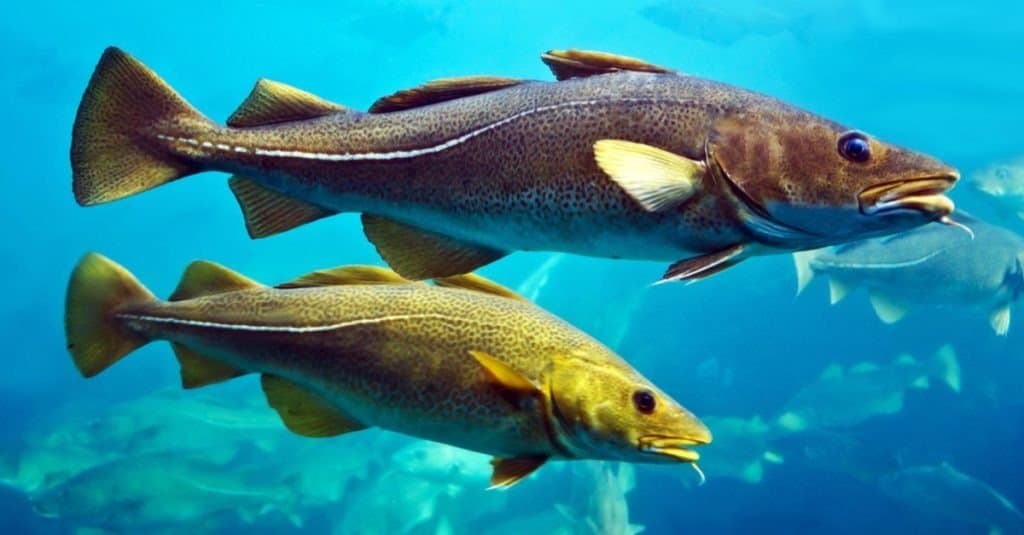
©Travel Faery/Shutterstock.com
14. Tadpole Cod – 7.1 Inches
Tadpole Cod, or Guttigadus globosus, is a species of codfish found in the northern Pacific Ocean. They are small fish that grow to an average size of about 6-7 inches long and weigh only around 1/2 pound. Tadpole Cod has two distinct colorations; one side is dark green with white spots, while the other side is light brown. The unique shape of their body has earned them the name “tadpole” due to their resemblance to a tadpole or larva. This type of cod typically feeds on small crustaceans and mollusks found near the seafloor. Tadpole Cod can be found in deeper water habitats up to depths of 2,000 feet. While they may not be as popular as some larger varieties of codfish, they still make a tasty meal when cooked properly!
13. Pelagic Cod – 7.3 Inches
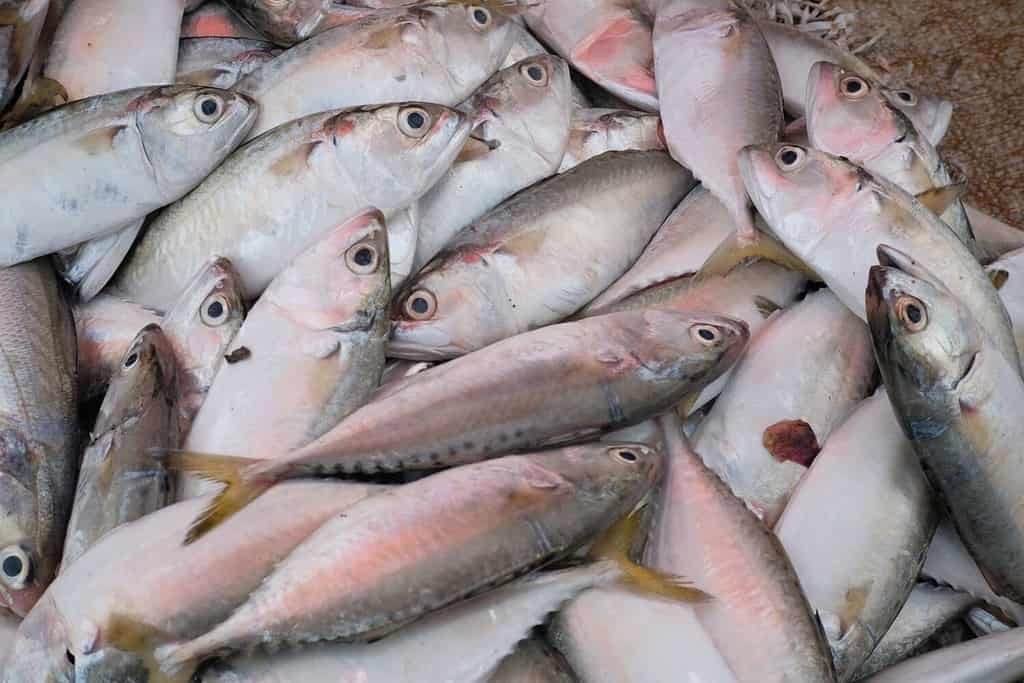
©Shofia Marwah/Shutterstock.com
Pelagic cod (Melanonus gracilis) is a species of fish that belongs to the family Gadidae, which includes many other species of cod fish. They are found in the North Pacific Ocean and the Bering Sea, mainly near Alaska. Pelagic cod are relatively small, reaching an average size of 7.3 inches when fully grown. The coloration of these fish is typically mottled brown or gray with a white belly and underbelly; they have three prominent fins on their backs and two smaller fins behind them. Pelagic cod feed primarily on planktonic crustaceans and small fishes such as herring and capelin. These fish can live up to 8 years old in the wild but often die earlier due to predation from larger predators like seals or sharks.
12. Arctic Cod – 12.7 inches
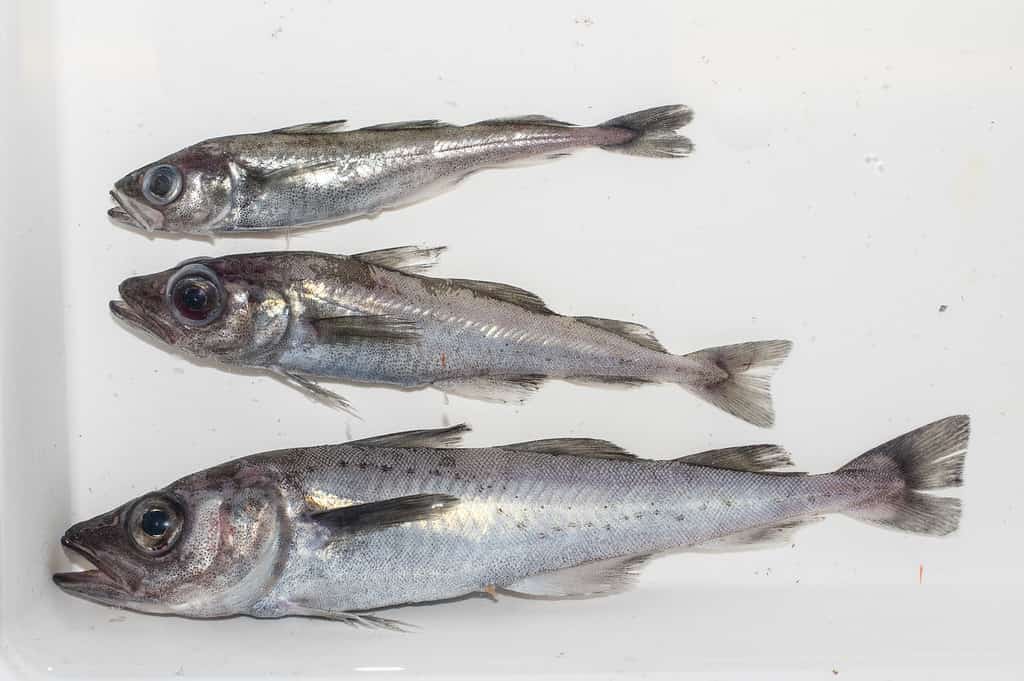
©https://ift.tt/YZTuA8l – License
Arctic cod, also known as Arctogadus glacialis, is a species of fish found in the Arctic Ocean and adjacent seas. It is one of the largest gadids in the world and typically grows up to 12.7 inches long. This species has an elongated body with small scales on its head and back. The sides are marked with two or three large dark spots surrounded by a lighter area which gives them their distinctive patterning. They feed mainly on planktonic crustaceans such as copepods, euphausiids, amphipods, and mysids but may also take smaller fishes when available. Arctic cod have been commercially important for centuries due to their abundance during certain times of the year. They are particularly valuable because they can be easily salted, smoked, or dried for preservation purposes.
11. Eucla Cod – 13.7 Inches
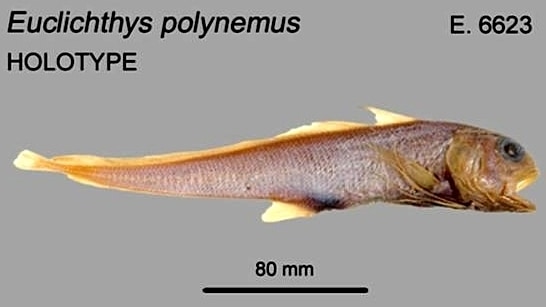
©https://ift.tt/3Fz5NJl – License
Eucla cod, also known as Euclichthys polynemus, is a species of marine fish found in the Indo-Pacific waters. It is generally identified by its scaleless body and long, slim snout. The maximum length of this fish is 13.7 inches (35 cm), making it one of the smaller species of cod. Its silver body has dark spots along the flanks and back, which become more prominent with age. It feeds on small crustaceans such as shrimp and other types of invertebrates that live near reefs in shallow waters. This species can be found in various locations around Australia, including Western Australia’s Abrolhos Islands and South Australia’s Spencer Gulf region, where it is fished commercially for food consumption or sold to aquariums for display purposes.
10. Polar Cod – 15.7 Inches
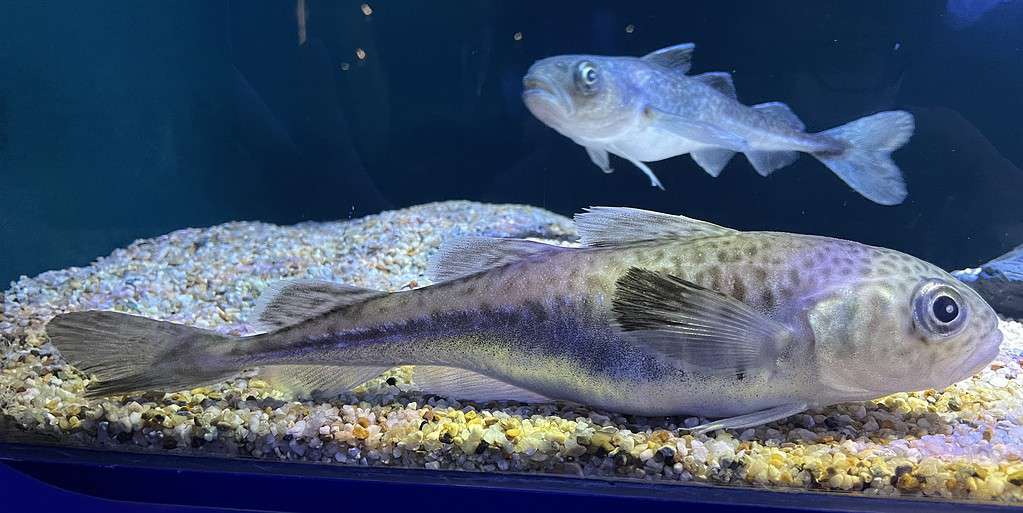
©4,032 × 2,018 pixels, file size: 1.54 MB, MIME type: image/jpeg – License
Polar cod Boreogadus saida is a species of Arctic cod found in the far North Atlantic, Pacific, and Arctic Oceans. They are typically silvery to gray-green with a dark olive backside and can grow up to 15.7 inches (40 cm) in length. Polar cod live at depths between 30 to 550 feet, feed on zooplankton such as shrimp, copepods, and amphipods, and are an important food source for large fish like halibut, salmon, and whales. Because of their abundance near the poles, they have become one of the most important fisheries resources for countries that have access to them.
9. Poor Cod – 15.7 Inches
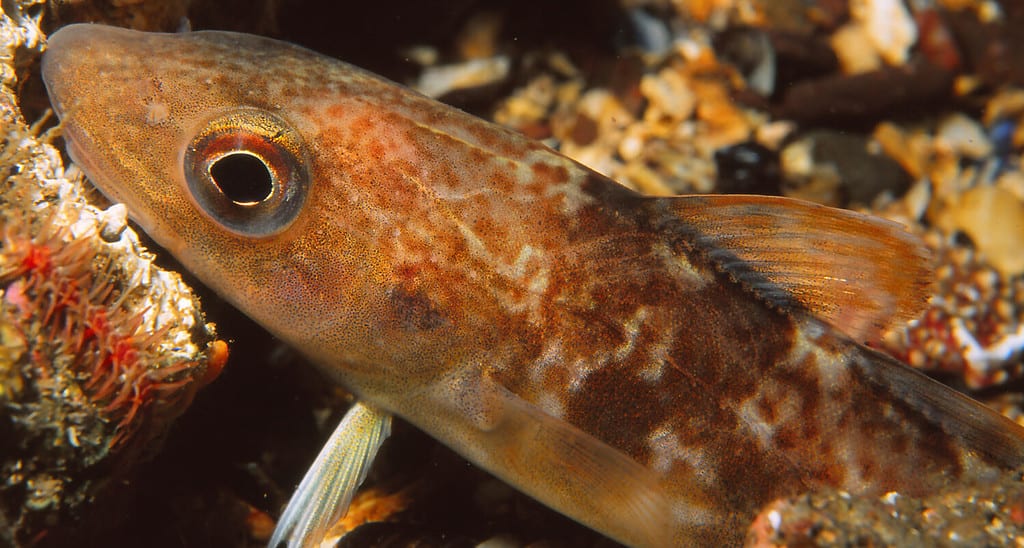
©valda butterworth/Shutterstock.com
Poor cod (Trisopterus minutus) is a species of ray-finned fish found in the Northeast Atlantic Ocean. It is typically found between depths of 0 to 600 feet and lives in small schools near the bottom of the sea. Poor cod are easily identified by their silver or golden coloration, large eyes, and three distinct dorsal spines that run along their back. They grow up to 15.7 inches long and can weigh up to 6 pounds at full size. This species feeds on crustaceans, mollusks, and small fish such as herring and sand eels. Poor cod are an important food source for many marine predators, including seabirds, seals, larger fish such as tuna and sharks, as well as humans who catch them both commercially and recreationally.
8. Small-Headed Cod – 18.8 Inches

©Guide to the Sea Fishes of New Zealand – License
Small-headed cod Lepidion microcephalus is a species of deepwater fish found in the Northern Atlantic Ocean. It has a small, triangular head and can grow up to 18.8 inches in length. The body is covered with large scales, and the tail fin is deeply forked. They feed on crustaceans, mollusks, and other benthic organisms because they live close to the bottom of the ocean floor. Small-headed cod can be caught using trawls and longlines, but they are not commonly fished due to their low population size in comparison with other types of cod fish like Alaskan Pollock or Pacific Cod.
7. Rock Cod – 19.6 Inches
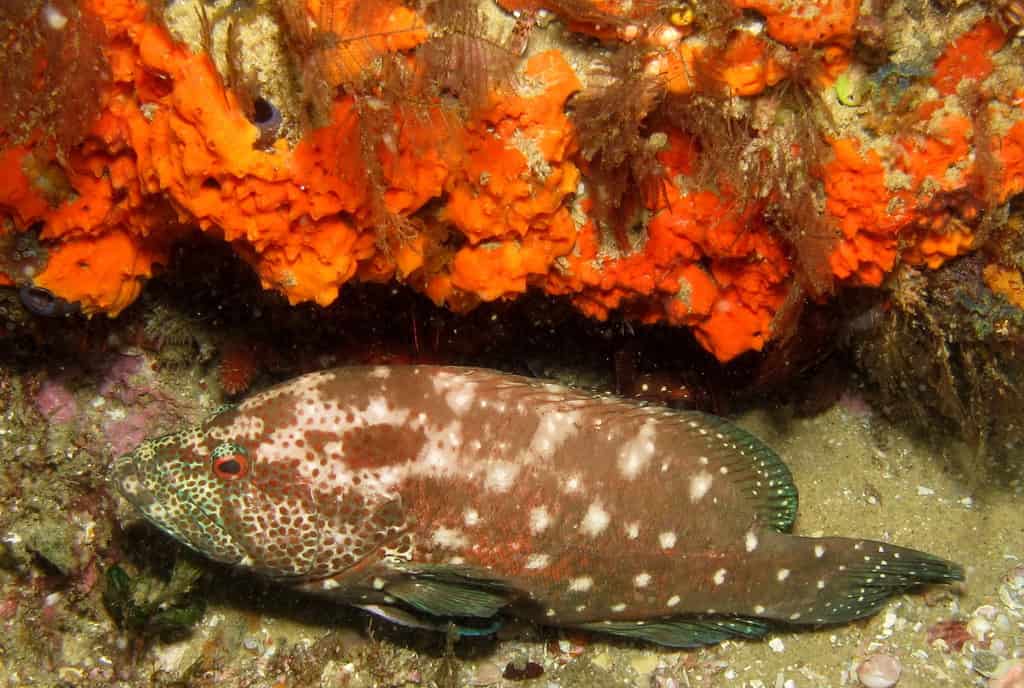
©A rock cod (grouper) that I can’t identify under sponge covered overhang at Ponta do Ouro, Mozambique – License
A Rock cod, also known as Lotella rhacina, is a species of marine fish found in the eastern Atlantic Ocean and the western Mediterranean Sea. It has an elongated body with four to six pairs of spines on its back that give it a rock-like appearance. The average size for adult males is around 19.6 inches in length, while females are typically smaller at 18 inches. This species feeds mainly on planktonic crustaceans, mollusks, worms, and other small fish such as anchovies and sardines. Rock cods have been caught by commercial fisheries since the mid-1900s but currently remain abundant throughout their range due to careful management practices and conservation efforts.
6. Saffron Cod – 21.6 Inches
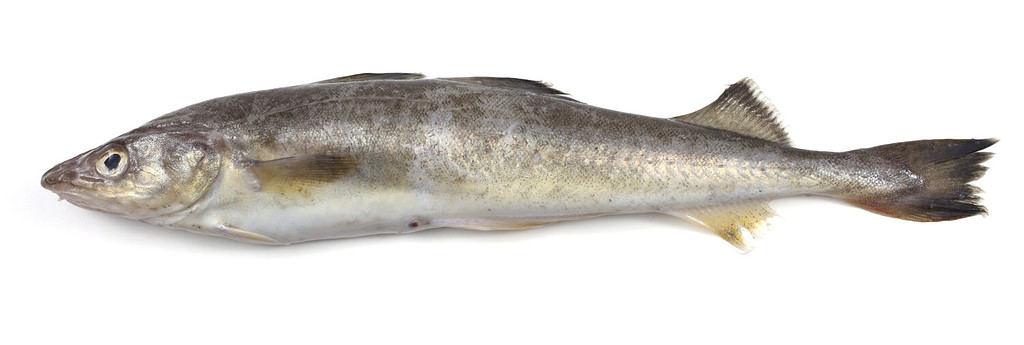
©Alex Coan/Shutterstock.com
Saffron cod, Eleginus gracilis, is a species of fish found in the North Pacific region. It has an elongated body with a yellow-brown coloration, and its average length is 21.6 inches when fully grown. This species can be found along the coast of Alaska and Northern Japan, as well as around the Kuril Islands and the Kamchatka Peninsula. It prefers to inhabit rocky bottoms near coral reefs but can also be seen in deeper waters away from shorelines. Saffron cod feeds mainly on small crustaceans such as shrimp and crabs, although they will occasionally consume other types of small fish too. It is important to note that due to overfishing, this species has become increasingly rare over recent years, so it should not be consumed without considering potential conservation implications first.
5. East Siberian Cod – 21.8 Inches
An East Siberian Cod, Arctogadus borisovi, is a species of cod fish found in the eastern part of the Arctic Ocean. It can grow up to 21.8 inches long and typically lives near the bottom of shallow waters, often around rocky shores or coral reefs. They feed on small crustaceans and other organisms that live in their habitat. In recent years, East Siberian Cods have become more popular for recreational fishing due to their size and strength when hooked onto a line.
4. Greenland Cod – 30.3 Inches
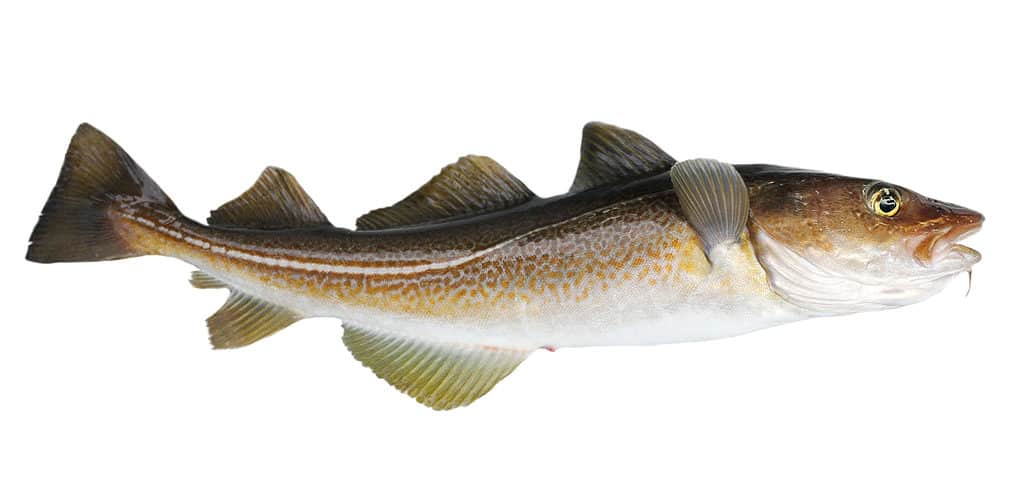
©xpixel/Shutterstock.com
Greenland cod, Gadus ogac, is a species of fish found in the North Atlantic and Arctic Oceans. It can grow to be up to 30.3 inches in length and has an elongated body with a large head, small eyes, and an upturned mouth. The typical coloration of the Greenland cod is dark greenish-brown on its dorsal side, which fades into light brown or white on its ventral side. Its diet consists mainly of small crustaceans such as shrimp and krill, but they will also feed on mollusks and other fish species when given the opportunity. As their name implies, this species is most commonly found near Greenland, but it can also be found around Iceland, Norway, the Faroe Islands, Canada’s east coast (Newfoundland), eastern Russia (Kamchatka Peninsula) as well as Alaska’s Aleutian Islands.
3. Pacific Cod – 46.8 Inches
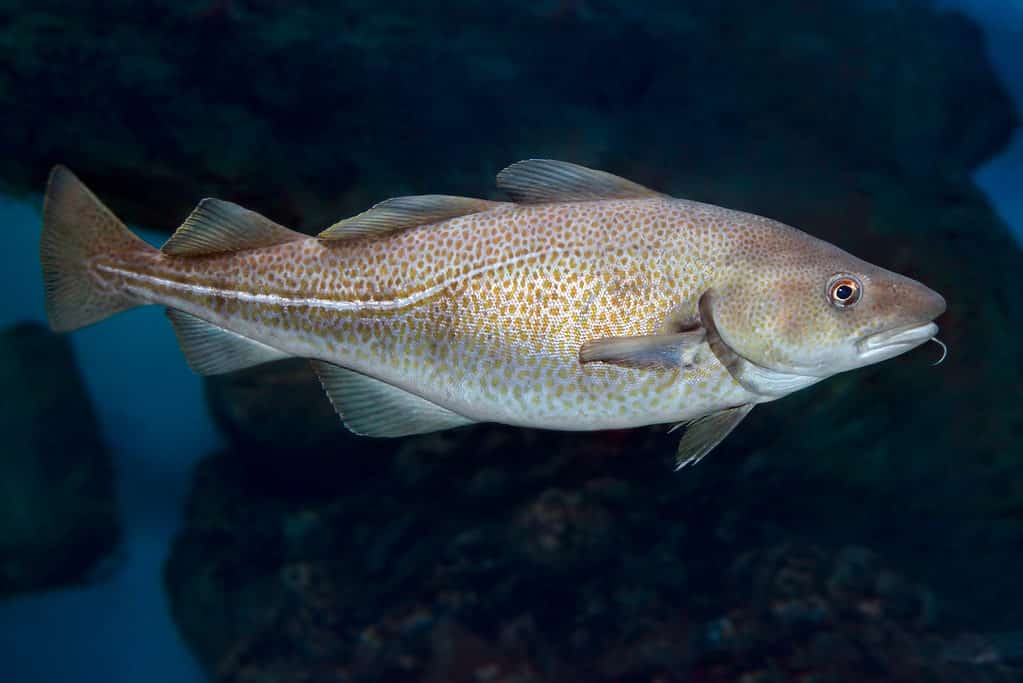
©iStock.com/TatianaMironenko
Pacific Cod Gadus macrocephalus, also commonly referred to as “true cod” or simply “cod,” is a species of fish found in the North Pacific Ocean. It is distributed from Alaska to southern California and can be found at depths ranging from 0-3,000 feet. This species typically grows up to 46.8 inches (3.9 feet) long and can weigh up to 44 pounds when fully grown. They have an oval, laterally compressed body with three dorsal fins and two anal fins on their underside. Their coloring ranges from blue-greenish brown on their back and yellowish white on their sides and belly with dark blotches scattered all over their sides. Pacific Cod are carnivorous predators that feed mainly on small fishes like capelin, herring, pollock, sand lance, hake, and shrimp, but they also consume squid, octopus, crabs, and mollusks as well as some plant material such as seaweed when available seasonally.
2. Common Ling Cod – 78.7 Inches
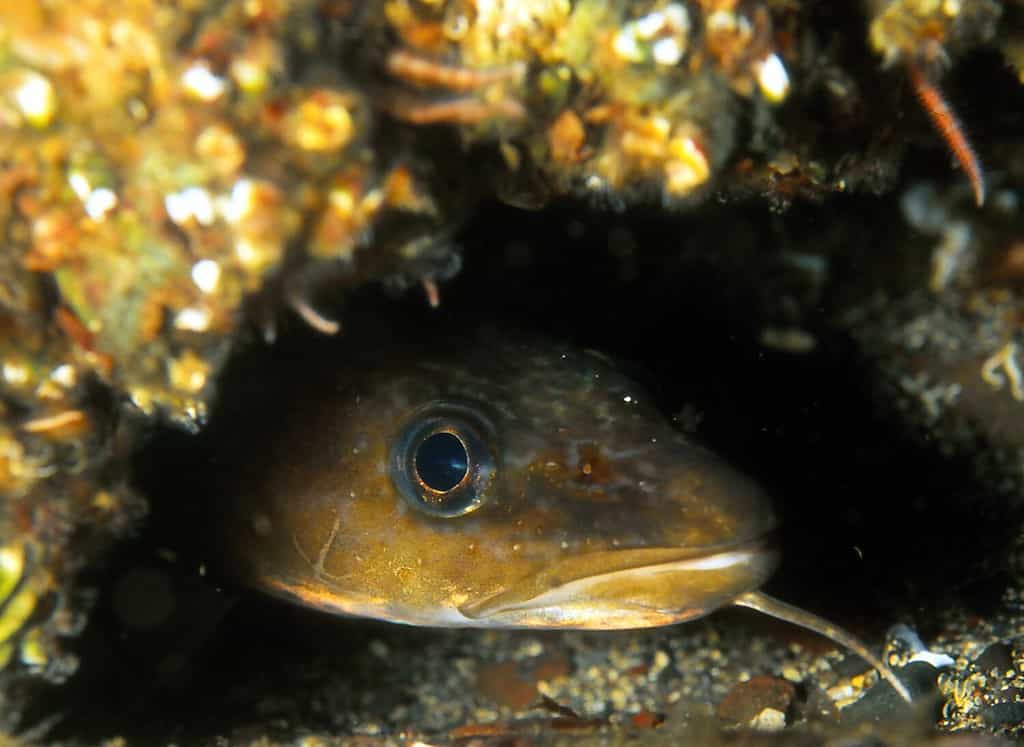
©valda butterworth/Shutterstock.com
Common Ling cod (Molva molva) is a species of fish found in the North Atlantic Ocean and the Mediterranean Sea. It has a long, slender body that can reach up to 78.7 inches or 6.5 feet in length, making it one of the largest codfish species in existence. The scales on its back are small and smooth, with colors ranging from yellowish-gray to brownish-black with dark mottling. Its diet consists mainly of smaller fishes, crustaceans, squid, octopus, and other invertebrates found along ocean floors near rocky outcroppings and reefs where they like to hide during daytime hours while they hunt for food at night. Common Ling Cod also have an extended spawning season when compared to other codfish species – from late winter until early summer – which helps them survive even harsher environmental conditions such as cold temperatures or fluctuations in sea levels due to climate change.
1. Atlantic Cod – 78.8 Inches

©Miroslav Halama/Shutterstock.com
Atlantic cod, Gadus morhua, is a species of fish found in the North Atlantic Ocean. It is one of the most important commercial species on the planet and has been harvested for centuries. This stocky fish typically grows to a maximum length of 78.8 inches (6.56 feet)! The coloration varies from gray-green or greenish brown along its back and sides, with white or yellowish shading on its belly area. Its diet consists mainly of small crustaceans, mollusks, and other smaller fish such as herring and capelin. In addition to being commercially fished, Atlantic cod also provide a food source for many marine predators like seals and sharks, as well as some birds like puffins!
Cooking Cod

©iStock.com/Al Gonzalez
If you’re looking for a codfish recipe, then there are many recipes to choose from! From classic battered and fried cod fillets to flavorful baked cod with herbs and spices, the possibilities are endless. You can also prepare grilled or smoked cod dishes, which offer a delicious way to enjoy this popular fish. If you prefer something more traditional, try pan-searing your cod fillets in butter or olive oil until golden brown on both sides. Serve it alongside roasted vegetables and potatoes for an easy but tasty meal that everyone will love!
One favorite way to prepare cod is by baking it. Start by preheating the oven to 350°F and then seasoning the cod filets with salt, pepper, and garlic powder. Then, transfer them to a greased baking dish and top them with butter or olive oil for extra flavor. Bake the fish for about 15 minutes or until it flakes easily when tested with a fork. Once done, garnish my cod with fresh parsley and lemon wedges before serving. It’s always delicious!
Summary of 14 Types of Cod Fish Ranked by Size
| Rank | Common Name | Scientific Name | Inches | Centimeters |
|---|---|---|---|---|
| 14 | Tadpole cod | Guttigadus globosus | 7.1 inches | 18.1 cm |
| 13 | Pelagic cod | Melanonus gracilis | 7.3 inches | 18.7 cm |
| 12 | Arctic cod | Arctogadus glacialis | 12.7 inches | 32.5 cm |
| 11 | Eucla cod | Euclichthys polynemus | 13.7 inches | 35.0 cm |
| 10 | Polar cod | Boreogadus saida | 15.7 inches | 40.0 cm |
| 9 | Poor cod | Trisopterus minutus | 15.7 inches | 40.0 cm |
| 8 | Small-headed cod | Lepidion microcephalus | 18.8 inches | 48.0 cm |
| 7 | Rock cod | Lotella rhacina | 19.6 inches | 50.0 cm |
| 6 | Saffron cod | Eleginus gracilis | 21.6 inches | 55.0 cm |
| 5 | East Siberian cod | Arctogadus borisovi | 21.8 inches | 55.6 cm |
| 4 | Greenland cod | Gadus ogac | 30.3 inches | 77.0 cm |
| 3 | Pacific cod | Gadus macrocephalus | 46.8 inches | 119 cm |
| 2 | Common ling | Molva molva | 78.7 inches | 200 cm |
| 1 | Atlantic cod | Gadus morhua | 78.8 inches | 200 cm |
Up Next:
"fish" - Google News
April 14, 2023 at 03:26AM
https://ift.tt/40ZIAiJ
14 Types of Cod Fish Ranked by Size - AZ Animals
"fish" - Google News
https://ift.tt/oihWd5c
https://ift.tt/zu2lhTb
Bagikan Berita Ini














0 Response to "14 Types of Cod Fish Ranked by Size - AZ Animals"
Post a Comment